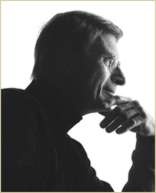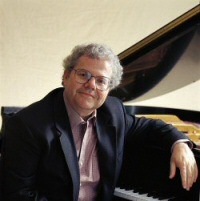Unforgettable Bruckner Seventh under Blomstedt at Tanglewood
Emmanuel Ax's Elegant Beethoven
By: Michael Miller - Aug 28, 2006
Tanglewood, August 26, 2006 8:30pm, Boston Symphony, Orchestra, Herbert Blomstedt, conductor, Emanuel Ax, pianoBeethoven, Piano Concerto No. 2 in B Flat Major, OP. 17; Bruckner, Symphony No. 7 in E
The Tanglewood series of Beethoven's five piano concerti continued Saturday evening with the Piano Concerto No. 2 in B Flat Major, which actually preceded the concerto in C Major published as No. 1. Beethoven first began it in 1788 and revised it for a performance in 1795, the same year the C Major was first performed. He revised it once again for a performance in 1798, which is the version which was published in 1801—after the C Major—the only one that survives. According to the program notes, Beethoven was quite annoyed by the reversal in numbering, since he was conscious that he had made a great deal of progress between them. In truth the progress seems vast, when they are heard in order on successive evenings. The multifaceted dialogue between the piano and the instrumental groups and soloists which Beethoven employed with such brilliance in the C Major is absent in the B Flat, in which the orchestra, lacking clarinets, presents the exposition and accompanies the piano in a straightforward manner, alternating in more or less complete thematic blocks. There is some tension, an alternation of competition and support, but Beethoven had not yet assimilated techniques which were already familiar enough in the Mozart's works in the genre. The young keyboard virtuoso-composer clove to the example of his teacher, Joseph Haydn, particularly in his treatment of the orchestra and its interaction with the solo instrument. As charming, energetic, and well crafted as it is, the C Major seems astonishing in comparison.
In Saturday's performance the BSO strings were greatly reduced. It was about the smallest orchestra I've seen on the Music Shed stage, but there was absolutely no deficiency in projection. Mr. Blomstedt elicited from them a sound quite different from what we heard from Mr. Dudamel the previous evening, marked by darker and drier strings and a smooth balance in chords. He and Mr. Ax favored broad tempi, especially in the first and second movements. Mr. Ax's elegant playing, at times delicate, at times tending towards a silvery richness, kept in touch with the concerto's intimate scale without compromising its energy or its occasional larger gestures. His blended passage work—the antithesis of Cooper's robust precision—was equally appealing in this piece. Their styles could not be more different, but both Cooper and Ax achieved brilliant successes in their Beethoven interpretations.
The rest of the program was devoted to Bruckner's Seventh Symphony, the composer's most popular work. It has a long tradition with the BSO, who played it first in 1887, two years after its first performance under Arthur Nikisch, who became music director of the BSO in 1889. Nikisch advised Bruckner to make certain cuts and alterations, which, together with suggestions by other associates, made their way into its first edition, edited by Löwe and Schalk. There are also many indications of tempo changes which also most likely come from Nikisch. Since Bruckner left the first performances of his symphonies to professional conductors and he lack a certain confidence in his work, he allowed his rugged symphonies to be assimilated into the late Romantic taste of his time. Not only were his abrupt transitions and harsh harmonies and orchestration smoothed over, performing style favored the primary melodic line over Bruckner's elaborate counterpoint, not to mention Nikisch's tempo fluctuations. Even today this Romantic style persists in performances of modern, "corrected" editions.
I mention this, because Herbert Blomstedt's unforgettable performance of the Seventh seems to me to emerge from profound reflection on these problems. More than any other conductor I have heard, he frees himself from performance tradition and penetrates into the essence of Bruckner's score. (Didn't Otto Klemperer say that performance tradition was no more than the last bad performance?) Traditionally the Seventh has been seen as a more lyrical and Romantic (and therefore more accessible) interlude between the craggy Eighth and the ethereal Ninth. Blomstedt's interpretation brings it much closer to the Eighth than we are accustomed to hearing. He focusses on Bruckner's counterpoint and makes melodic lines work within it. For example the beautiful rising first subject of the first movement evolves in the coda, somewhat truncated, as a functional part of a contrapuntal passage, in which it appears as a sort of descant against a slower theme. Blomstedt's deep knowledge of the score, his meticulous attention to detail including rests in inner voices, and the transparent playing he produced from the orchestra allowed Bruckner's interweaving lines their full value.
On another level, there are two quite different traditions on Bruckner interpretation, and both have produced equally compelling performances. The first stems from Nikisch, and is most eloquently represented by Furtwängler, who allowed the music to ebb and flow in marked variations of tempo. In the other, the tempo fluctuations are reined in and a steady pulse is approximated in order to emphasize the flow and structure of the works. Hausegger, Böhm, and Dohnanyi are outstanding proponents of this approach. One could say that Blomstedt falls somewhere in between, or rather that he brings together the best of both. His efficient beat maintains a flow, and he is careful to avoid any excess. When he chooses to alter the tempo, structural and harmonic reasons underly any expressive effect. Ultimately, Blomstedt is not relying so much on an established beat as on the shape of Bruckner's melodic phrases and the pauses between them—all seen within the framework of his contrapuntal composition. So, in one respect Blomstedt has modernized the Nikisch-Furtwangler approach, and in another he is reaching back to the original score in Haasian fashion. In this spirit he decided to forego the outburst of tympani, triangle, and cymbals in the slow movement, which are likely to be Nikisch additions. As much as I have been programmed to expect this climactic detail, I was happy to miss it. Bruckner's great music seemed to grow to its own natural climax over a broader space rather than to explode in a sudden, exaggerated effect.
At 79, Herbert Blomstedt has shown himself to be one of the great conductors of our time, as he has for many years in his long-term appointments at Dresden, San Francisco, and Leipzig.



